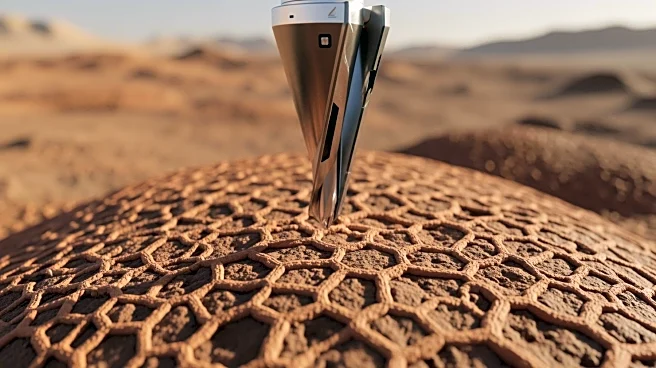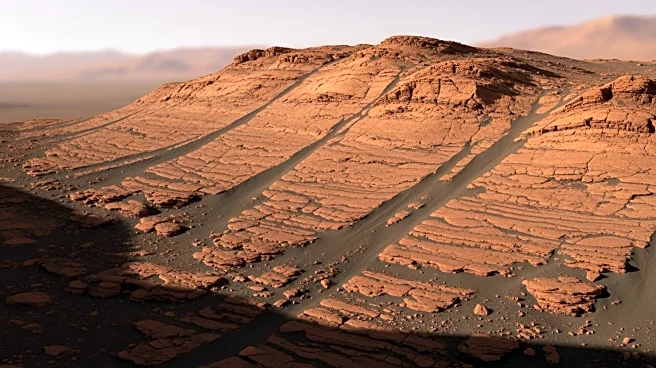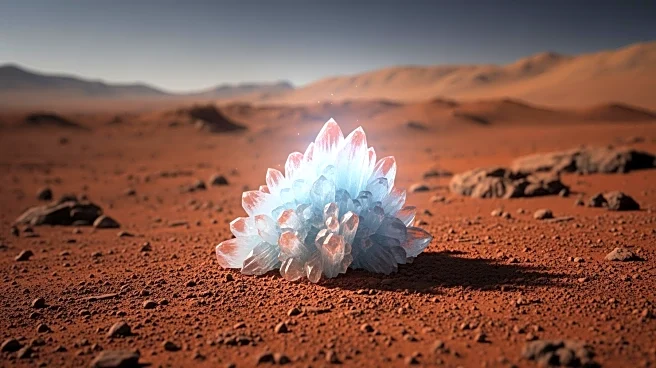What's Happening?
NASA's Curiosity rover has successfully drilled its 44th hole on Mars, marking a significant achievement in its ongoing exploration of the Red Planet. The drilling occurred at the 'Monte Grande' hollow
within the 'Valle de la Luna' target. This operation is part of a broader investigation into the 'boxwork unit,' a region characterized by resistant ridges and less-resistant rock pits. The rover's team is focused on transferring the drill tailings to the SAM (Sample Analysis at Mars) and CheMin (X-ray diffraction) instruments for detailed analysis. These instruments will provide crucial mineralogical and compositional data to understand the formation of the boxwork features. The current findings show subtle differences in the chemistry of the rocks forming the ridges and hollows, but a definitive compositional explanation is yet to be determined. Additionally, the rover is conducting remote sensing and photometry studies to analyze changes in the apparent brightness of rocks and soils under different lighting conditions.
Why It's Important?
The Curiosity rover's drilling and analysis efforts are vital for understanding Mars' geological history and assessing its past habitability. By studying the mineral composition and formation processes of Martian rocks, scientists can gain insights into the planet's climate history and potential for past life. The data collected could inform future missions and the search for life beyond Earth. The ongoing research also contributes to NASA's broader goals of exploring Mars at a lower cost, as demonstrated by the efficient use of the rover's instruments. The findings from this mission could have significant implications for planetary science and the development of future exploration technologies.
What's Next?
In the coming weeks, the Curiosity team plans to continue analyzing the drilled samples with additional SAM experiments and assess the tailings. The team is also scouting for a new drilling location on a ridge to compare results with those from the Monte Grande hollow. These efforts will further enhance the understanding of Martian geology and support the mission's scientific objectives. The ongoing analysis and future drilling operations will provide more data to refine theories about Mars' geological processes and its potential to support life.











